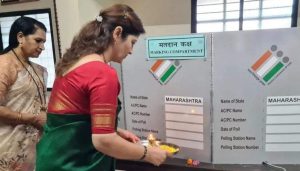Basmati rice exports grows 32% in Q1, however resumption in Iranian imports crucial; firm paddy prices expected: ICRA
Pune, 21 September, 2017: Indian Basmati rice exports have witnessed a rebound in the current fiscal with Q1FY2018 registering a 32% growth in exports contributed by 25% increase in realisations and 7% increase in volumes. This comes after a three year consecutive decline in basmati exports till FY2017 (Rs. 21,605 crores). . In the past, despite the volumes holding firm, the exports have been adversely impacted by pressure on realisations (from peak of Rs. 77,988/MT in FY2014 to Rs. 54,011/MT in FY2017), driven by lower demand in the global market as well as lower paddy prices over the procurement seasons of FY2015 and FY2016.
Commenting on the trend, Mr. Deepak Jotwani, Assistant Vice President, ICRA said: “Basmati rice exports in the current fiscal have been encouraging, especially driven by demand from Iran. The Middle Eastern countries are the biggest importers; and also a source of volatility in demand. Demand from Iran, the second largest importer has been fairly volatile, primarily on account of import bans imposed from time to time. In Q1FY2018, Iran has been the primary contributor to growth in industry exports – contributing around 40% to the total. However, from August 2017, Iran has again discontinued importing Basmati rice from India. Resumption of imports by Iran, which is anticipated around the procurement season, would be critical for the overall demand for Basmati rice. Any delays in the same could dampen the paddy procurement in the upcoming season as well as subdue the exports outlook for H2FY2018 and FY2019. This is especially material in the light of decline in volume sales from other key market – Saudi Arabia (13% of total exports in Q1FY2018 as against 20% in FY2017).”
On the supply side, during the last procurement season of October – December 2016, Basmati paddy prices had firmed up by 20-25% across varieties, on the back of relatively lower production. During the current season, there has been rainfall deficit in the key Basmati rice producing states of Uttar Pradesh and Haryana over the previous year’s monsoon season till mid-September 2017 as well as lower water reservoir levels in Uttar Pradesh. These factors can translate into lower paddy production in the current crop season, and thus the paddy prices are likely to open firm in the oncoming procurement season.
Mr. Jotwani concludes: “ICRA expects that the demand concerns in the form of Iran import ban and sluggishness from other key geographies would be overcome and export volumes in FY2018 to be around 4.1 million MT (4% higher than FY2017). In addition, higher paddy prices in the last procurement season and likelihood of firm prices in the upcoming procurement season are expected to push up the average realisations in FY2018. As a result, export value is expected to grow to around Rs. 26,000 crores in FY2018, a growth of 21% over FY2017.”







